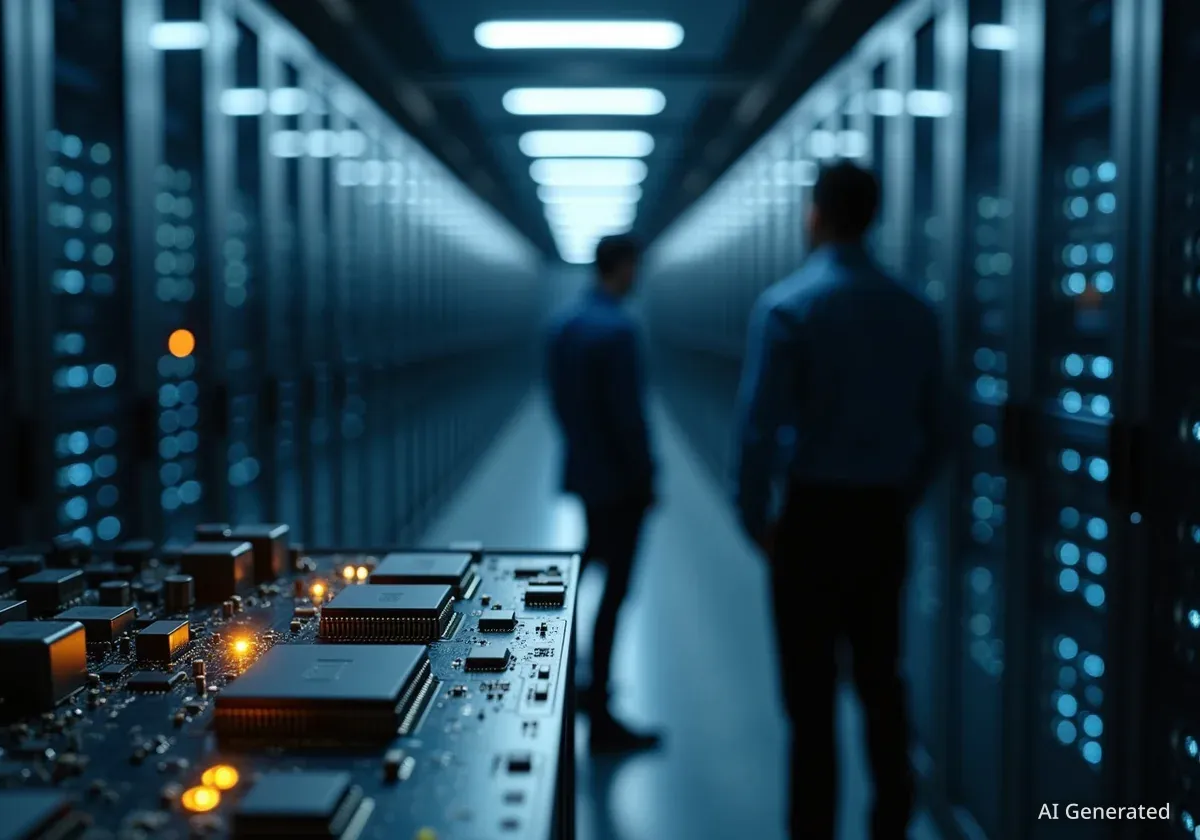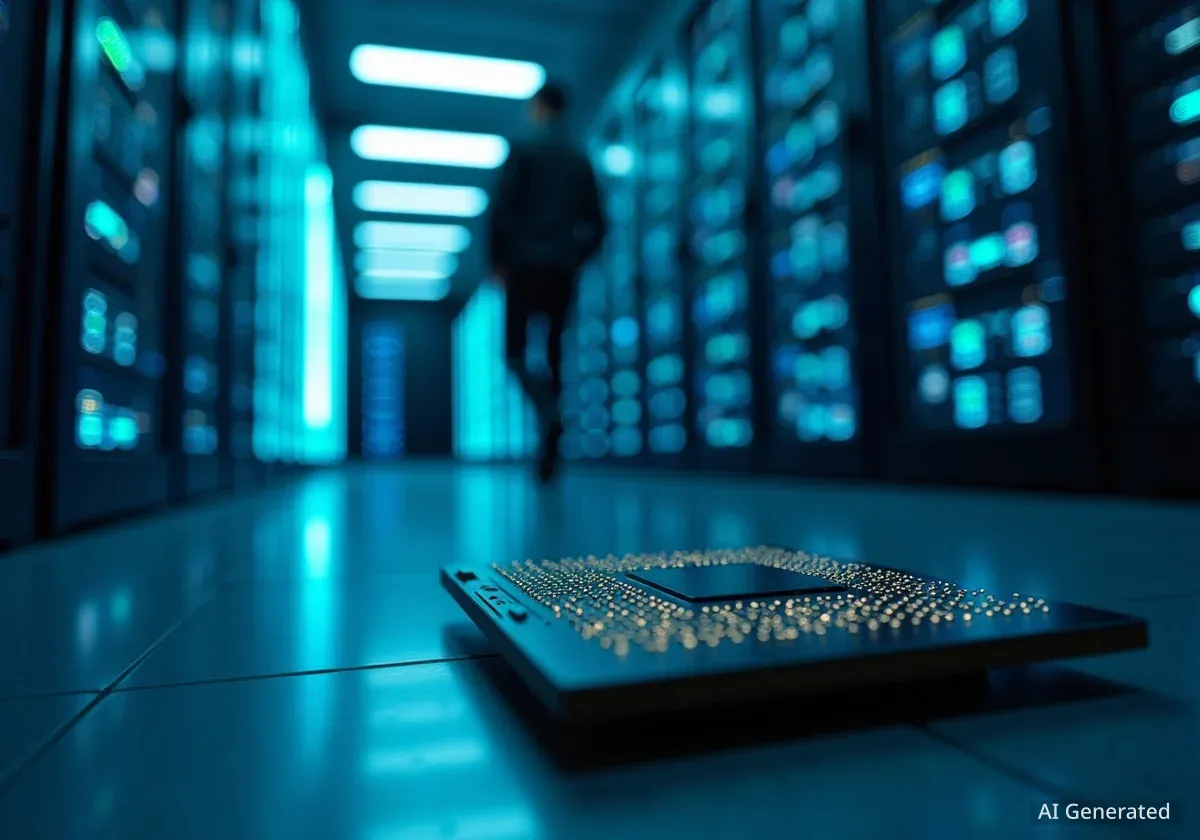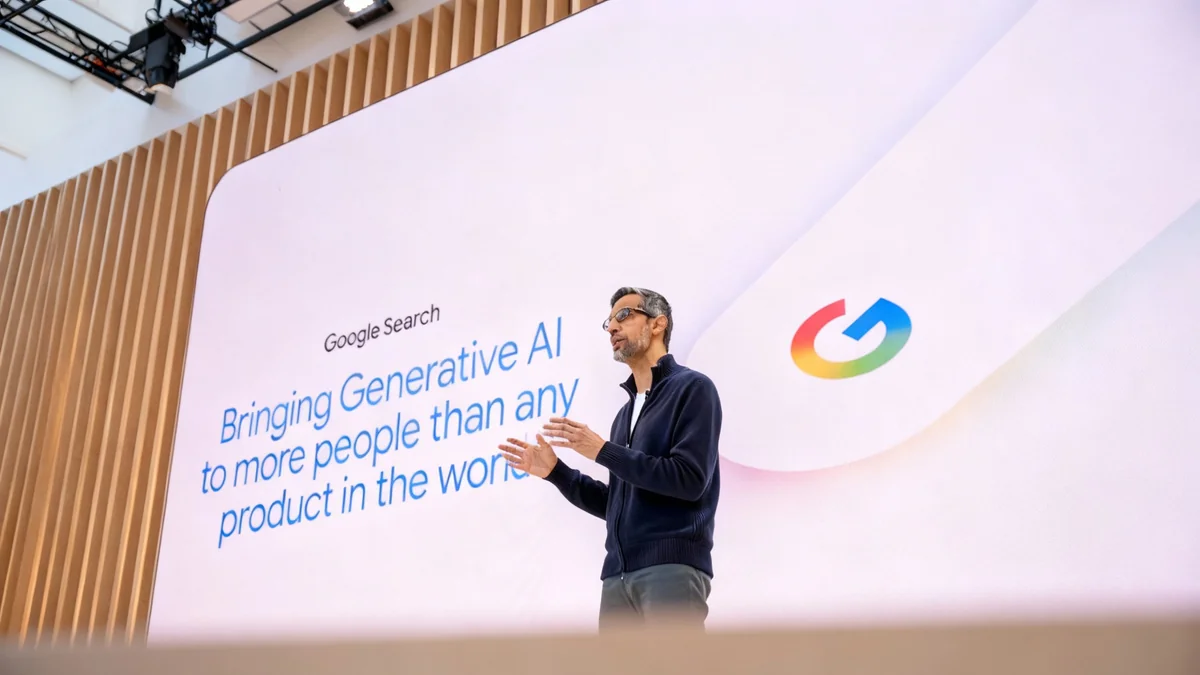In the rapidly advancing field of artificial intelligence, two distinct visions are competing for dominance. Elon Musk is focused on integrating AI into the physical world through robotics and autonomous vehicles at Tesla, while Sam Altman's OpenAI is pioneering software-based AI that is reshaping digital industries. As these two technology leaders pursue different paths, investors are closely watching which approach will yield greater returns. However, a third company, Nvidia, which supplies the essential hardware for both ventures, may be the ultimate beneficiary of the AI boom.
Key Takeaways
- Elon Musk's strategy centers on physical AI, including Tesla's Optimus robots and self-driving vehicles.
- Sam Altman's OpenAI is leading the software AI revolution, achieving a new valuation of $500 billion.
- Chip manufacturer Nvidia is positioned to benefit significantly by providing the foundational hardware for both AI sectors.
- Tesla reported record Q3 deliveries but faces investor concerns over future growth and CEO focus.
- Regulatory and policy shifts, including potential trade tariffs and changes in the credit scoring industry, are creating additional market uncertainty.
The Diverging Paths of AI Development
The debate over the future of artificial intelligence is largely defined by two competing philosophies. One, championed by Elon Musk, envisions AI seamlessly integrated into our physical environment. This perspective drives the development of Tesla's autonomous vehicles and the Optimus robot, with goals of placing one million robo-taxis on the road and selling one million robots.
This hardware-centric approach requires substantial capital investment in manufacturing and robotics. While it presents high barriers to entry for competitors, the path to profitability and mass adoption is complex and long-term. The success of this vision is tied to milestones in Musk's proposed $1 trillion pay package, which is currently facing shareholder scrutiny.
Altman's Software-First Strategy
In contrast, Sam Altman and OpenAI are focused on the software domain. Their large language models, like the one powering ChatGPT, and plans for advanced AI agents aim to revolutionize how we interact with information and automate digital tasks. This software-first model is often easier to scale and can achieve higher profit margins than hardware.
The market has responded favorably to this approach. A recent round of employee stock sales valued OpenAI at an estimated $500 billion, making it the world's most valuable startup, surpassing even SpaceX. This valuation provides OpenAI with significant resources to expand its software ecosystem.
Hardware vs. Software AI
The competition between Musk and Altman highlights a fundamental question for investors: Is the greater value in AI that interacts with the physical world (hardware) or AI that operates in the digital realm (software)? While software can be distributed globally with minimal friction, hardware creates tangible products with deep supply chains. Both require massive computational power to develop and operate.
Nvidia: The Essential AI Infrastructure Provider
While Musk and Altman compete on the application layer of AI, Nvidia operates at the foundational level. The company, led by CEO Jensen Huang, designs and manufactures the graphics processing units (GPUs) that are essential for training and running complex AI models. Both Tesla's self-driving algorithms and OpenAI's large language models depend on this powerful hardware.
This unique position makes Nvidia a potential winner regardless of which AI vision ultimately prevails. Whether the future involves a robot performing household chores or a digital agent managing schedules, both scenarios will require immense computing power. As a result, many analysts see Nvidia as a more fundamental investment in the growth of the entire AI sector.
"The future might be a Tesla Optimus robot doing the yard work or an OpenAI agent contracting a gardener for you. Nvidia CEO Jensen Huang will be sitting pretty in any case."
Corporate and Market Developments
Recent events at both Tesla and OpenAI provide further insight into their respective challenges and opportunities. These developments are closely watched by investors trying to navigate the volatile technology market.
Tesla's Performance and Challenges
Tesla announced record deliveries for the third quarter, with 497,099 cars delivered. This marked a 29% increase from the second quarter and a 7.4% rise from the previous year. The sales surge is partly attributed to the conclusion of a federal EV tax credit, which may have pulled forward demand.
Despite the record numbers, the company's stock has faced pressure. Investors remain focused on the long-term growth drivers, such as robo-taxis and robotics, rather than short-term EV sales figures. Through the first three quarters of 2025, total deliveries of 1,217,902 are still down 5.9% compared to the same period in 2024.
Beyond sales, Elon Musk is dealing with multiple issues, including a lawsuit from the Securities and Exchange Commission regarding his disclosures of Twitter stock purchases. Additionally, a group of pension funds is opposing his proposed $1 trillion pay package, citing concerns that his focus is divided among his various companies.
OpenAI's Valuation and Bubble Concerns
OpenAI's new $500 billion valuation was reached after employees sold $6.6 billion in stock to private investors. This represents a $200 billion increase from its last funding round. The rapid rise has fueled discussions about a potential technology bubble centered on AI.
Interestingly, CEO Sam Altman himself has acknowledged the market's enthusiasm. In recent comments to reporters, he stated his opinion that investors as a whole are currently "overexcited about AI." However, he also affirmed his belief that AI is "the most important thing to happen in a very long time." This dual perspective highlights the tension between long-term potential and short-term market speculation.
Broader Economic and Regulatory Landscape
Beyond the tech sector, other significant policy and regulatory developments are influencing the market. These shifts in trade and finance could have wide-ranging effects on various industries.
Trade Tensions and Agricultural Support
The Trump administration is considering new measures to support American farmers affected by ongoing trade disputes. President Trump indicated that soybeans would be a key topic in his upcoming meeting with Chinese leader Xi Jinping. He is also contemplating using revenue from tariffs to provide financial aid to farmers.
Treasury Secretary Scott Bessent suggested that "substantial support" for farmers could be announced soon. Reports indicate the administration may be considering a $10 billion bailout package. This follows a previous $32 billion bailout during Trump's first term and reflects concerns that U.S. farmers may be permanently losing market share to competitors in Brazil and Argentina.
Changes in the Credit Scoring Industry
Fair Isaac, the company behind the FICO credit score, has announced a major change to its business model. The company will now offer mortgage lenders direct access to consumer credit reports, bypassing the three major credit bureaus: Experian, Equifax, and TransUnion.
This move is expected to introduce more competition and transparency into the mortgage lending process. Fair Isaac is offering new pricing models, which could potentially lower costs for borrowers. The decision follows regulatory scrutiny from the Federal Housing Finance Agency (FHFA), which recently allowed lenders to use FICO's competitor, VantageScore, for government-backed loans. Following the announcement, Fair Isaac's stock rose 18%, while shares of the credit bureaus declined.





